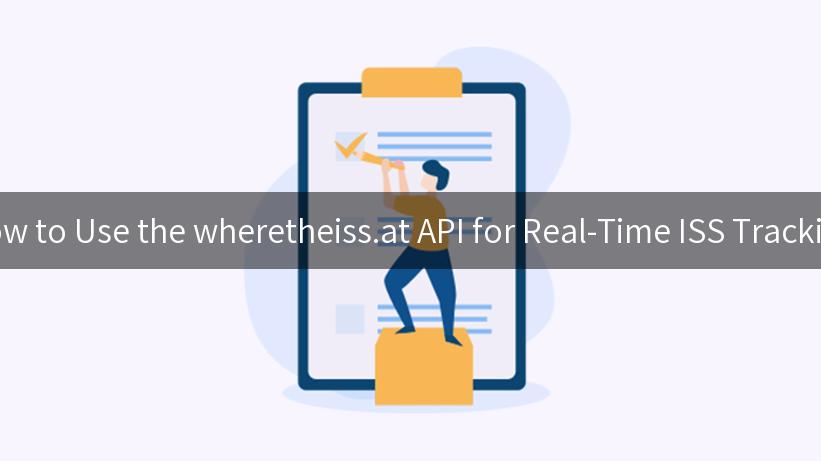
Tracking the International Space Station (ISS) is an exciting activity for both enthusiasts and professionals interested in space exploration. The constant movement of the ISS across the sky makes it a fascinating object to observe, and through the use of advanced technology, it is now easier than ever to track its path in real time. One of the most reliable tools for this purpose is the wheretheiss.at API. This article will guide you on how to use this API effectively for real-time ISS tracking, and how it integrates with services like APIPark, Azure, API Gateway, and Traffic Control.
What is the wheretheiss.at API?
The wheretheiss.at API provides real-time data about the location of the ISS. This API is highly reliable and offers a simple interface to retrieve information about the ISS’s current position, speed, and visibility. It is a valuable resource for developers who want to integrate ISS tracking features into their applications.
Key Features of the wheretheiss.at API
- Real-Time Data: Access current location, speed, and altitude of the ISS.
- Simple JSON Responses: Easy-to-parse data format.
- High Availability: Reliable uptime ensuring continuous data access.
Setting Up the wheretheiss.at API
To get started with the wheretheiss.at API, you need to send HTTP GET requests to the API endpoint. Here’s a simple example using Python:
import requests
def get_iss_location():
url = "https://api.wheretheiss.at/v1/satellites/25544"
response = requests.get(url)
if response.status_code == 200:
data = response.json()
print(f"Latitude: {data['latitude']}, Longitude: {data['longitude']}")
else:
print("Failed to retrieve data")
get_iss_location()
This script fetches the current latitude and longitude of the ISS. You can expand this basic script to include additional data points provided by the API, such as altitude and velocity.
Integrating with APIPark
APIPark can enhance your application’s functionality by offering additional API management features. It provides a platform to monitor API usage, handle requests more efficiently, and ensure that your application scales as needed.
Benefits of Using APIPark
- API Monitoring: Track usage statistics and performance metrics.
- Scalability: Automatically adjust resources based on demand.
- Security: Protect your API endpoints with advanced security features.
To integrate APIPark with the wheretheiss.at API, you will need to configure your API endpoints within the APIPark platform. This involves setting up routing rules and defining API access policies.
Deploying on Azure
Azure provides a cloud-based platform to host your ISS tracking application. By deploying your application on Azure, you can take advantage of its robust infrastructure and wide range of services.
Steps to Deploy on Azure
- Create an Azure Account: Sign up for an Azure account if you haven’t already.
- Set Up a Web App: Use Azure’s Web App service to host your application.
- Deploy Your Code: Use Azure DevOps or other deployment tools to push your application code to Azure.
- Monitor Performance: Use Azure Monitor to keep an eye on application performance and make necessary adjustments.
Utilizing API Gateway
API Gateway acts as a front door for your application, managing incoming API requests. It can help you optimize the way you handle API calls to the wheretheiss.at API.
Advantages of API Gateway
- Request Management: Handle large volumes of requests efficiently.
- Load Balancing: Distribute incoming requests across multiple servers.
- Caching: Reduce latency by caching frequent responses.
APIPark is a high-performance AI gateway that allows you to securely access the most comprehensive LLM APIs globally on the APIPark platform, including OpenAI, Anthropic, Mistral, Llama2, Google Gemini, and more.Try APIPark now! 👇👇👇
Traffic Control with wheretheiss.at API
Managing traffic efficiently is crucial when dealing with real-time data. The wheretheiss.at API can handle large volumes of requests, but implementing traffic control measures can enhance performance and reliability.
Traffic Control Techniques
- Rate Limiting: Limit the number of API requests per user to prevent abuse.
- Prioritization: Ensure that critical requests are processed first.
- Throttling: Gradually reduce the request rate when approaching limits.
A Comprehensive Example
Let’s combine everything we’ve discussed into a more comprehensive example. Suppose we’re creating a web service to visualize ISS data using the wheretheiss.at API, hosted on Azure, with API management handled by API Gateway and APIPark.
Example Architecture
| Component |
Description |
| wheretheiss.at API |
Provides real-time ISS data |
| APIPark |
Manages API usage and provides analytics |
| Azure |
Hosts the web application |
| API Gateway |
Manages API requests and optimizes performance |
Code Sample
Here’s a simple Flask application that integrates these components:
from flask import Flask, jsonify
import requests
app = Flask(__name__)
@app.route('/iss')
def iss_location():
url = "https://api.wheretheiss.at/v1/satellites/25544"
response = requests.get(url)
if response.status_code == 200:
data = response.json()
return jsonify({
"latitude": data['latitude'],
"longitude": data['longitude'],
"altitude": data['altitude'],
"velocity": data['velocity']
})
return jsonify({"error": "Failed to retrieve data"}), 500
if __name__ == '__main__':
app.run()
This Flask application provides an endpoint /iss that returns the current position of the ISS. By deploying this on Azure and managing traffic via API Gateway, you can offer a robust and scalable solution for ISS tracking.
Conclusion
The wheretheiss.at API is a powerful tool for real-time ISS tracking. By integrating it with services like APIPark, Azure, and API Gateway, you can create a highly efficient application capable of handling large volumes of data and requests. Implementing these solutions not only enhances the performance of your application but also ensures that it remains scalable and secure. Whether you are a developer looking to create a new application or a space enthusiast eager to track the ISS, leveraging these technologies can provide a seamless experience.